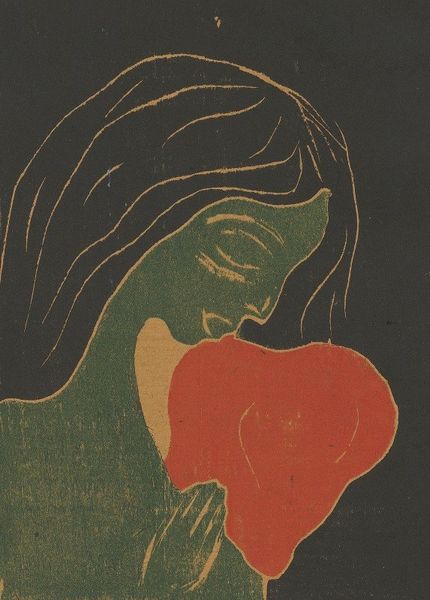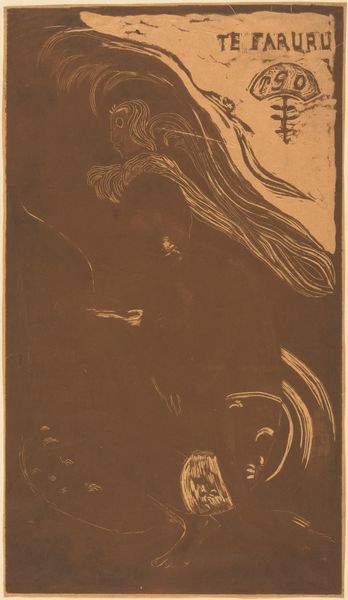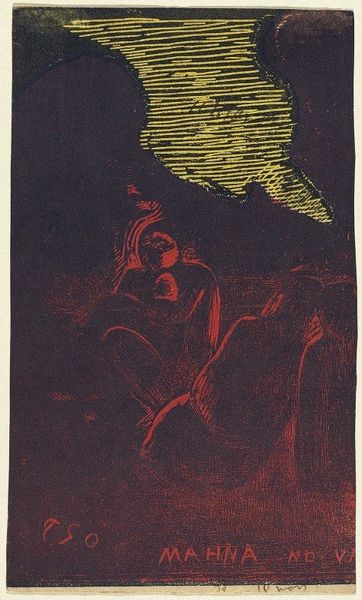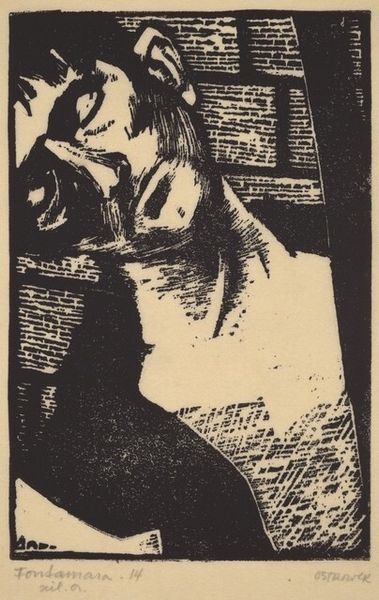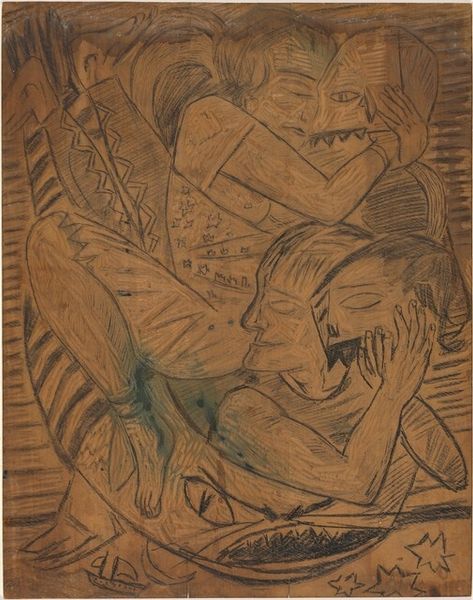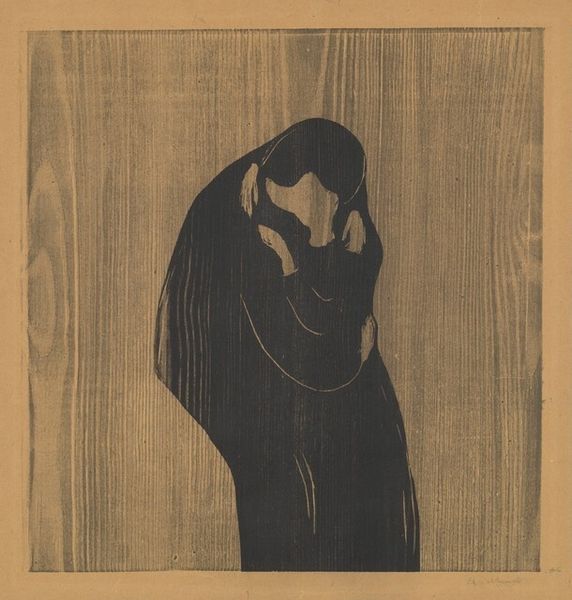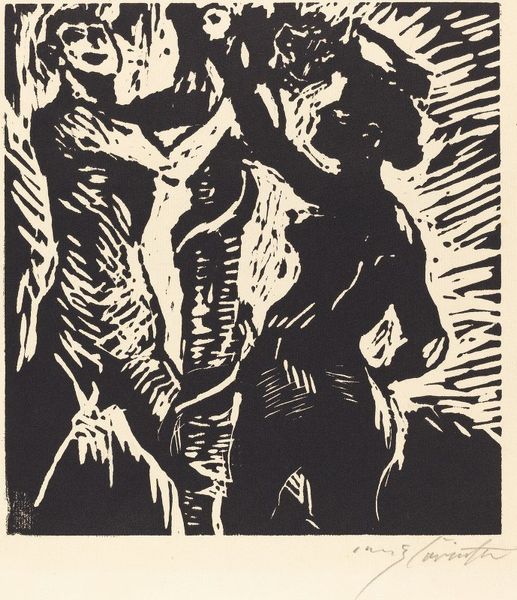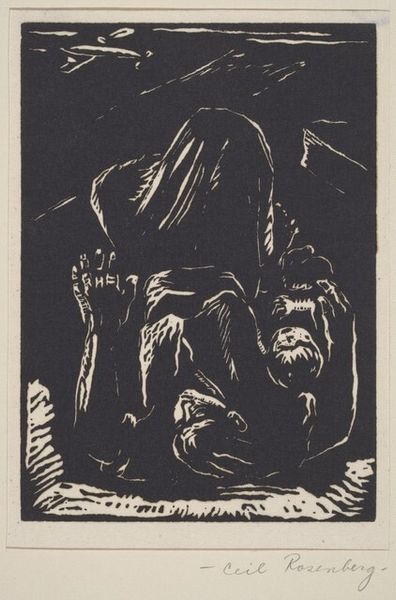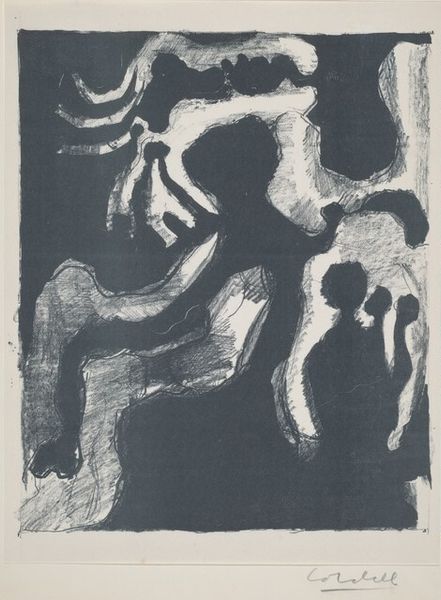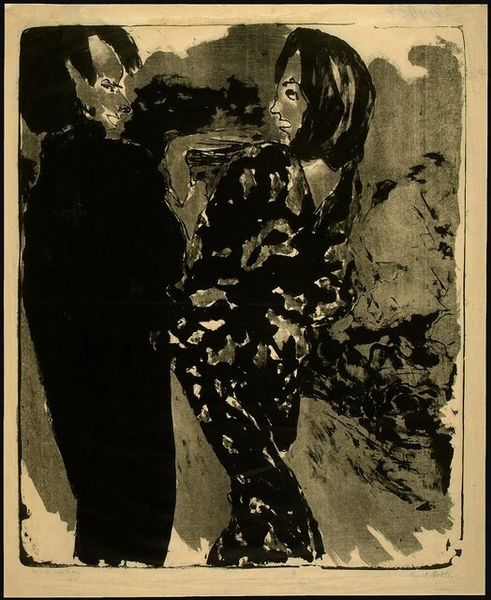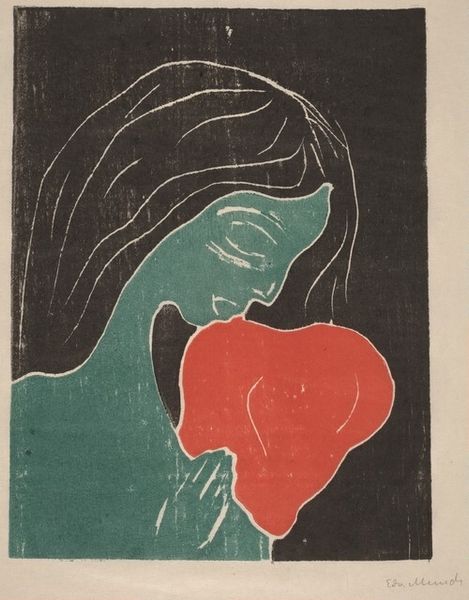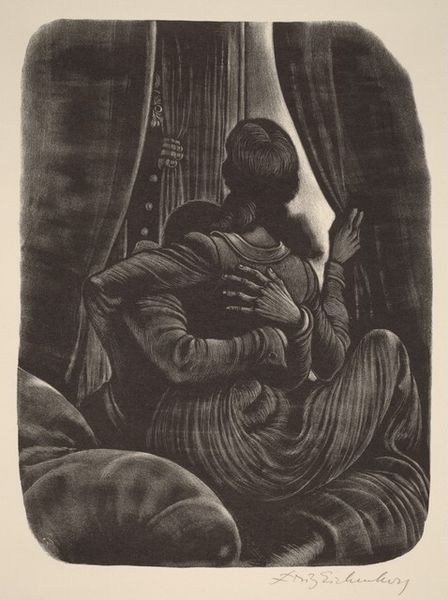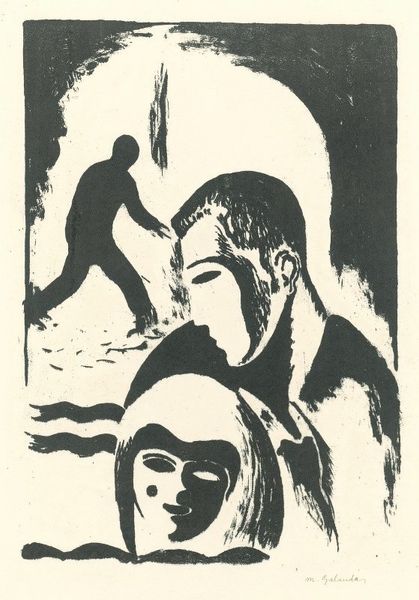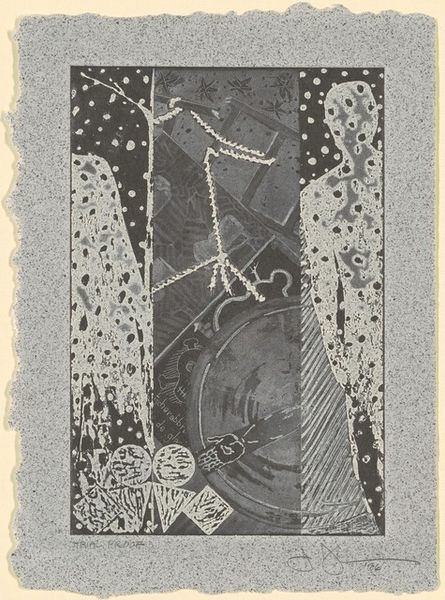
print, woodcut
#
narrative-art
#
ink painting
# print
#
figuration
#
woodcut
#
symbolism
#
post-impressionism
#
nude
#
erotic-art
Copyright: Public Domain: Artvee
Curator: Alright, let's delve into Paul Gauguin's woodcut from 1893-94, titled "Te Fararv – Ici On Fait L’amour," which translates to "Here We Make Love." It’s a powerful piece from his Tahitian period. Editor: My goodness, the atmosphere is thick enough to spread on toast. It’s so brooding, almost gothic in its shadows. The couple practically melts into the darkness around them. Is it intimate, or is it hiding something? Curator: It’s both, I think. Gauguin's exploration of Tahiti wasn't just a personal escape; it was deeply implicated in colonial power dynamics. His representations of Tahitian women, in particular, must be considered within that framework. The title promises intimacy, yet the darkness hints at the complexities and the perhaps unseen forces at play. Editor: That makes total sense. There's an unsettling quality beneath the surface calm. I am curious to understand the way Gauguin created this print. How did he conjure up these emotions from such basic woodcuts? Curator: Well, think about it. He's intentionally evoking primal or "primitive" forms— a visual language associated with cultures he believed were untainted by European civilization. Of course, we recognize the problematic assumptions embedded in that perspective. The roughness, the stark contrasts… it’s all meant to communicate a kind of raw authenticity that conveniently reinforces colonial stereotypes about Tahiti and its people. Editor: Ah, I see. I like that idea of an art style playing along these lines to either prove or hide colonial stereotypes! So Gauguin’s trying to distill everything down to a potent, concentrated experience. He almost uses it as a veil between who they were, and how the "old world" changed their history... It feels a bit melancholic when looked at in this way. Curator: Exactly! The figures are intertwined, yes, but also engulfed, potentially losing their individual identities to this exoticized representation crafted by a colonizing gaze. The print itself, through its very aesthetic choices, participates in the romanticized yet deeply skewed portrayal of Tahiti. Editor: So as a take away, it would be to avoid glorification, or condemnation; maybe that the most we can get from it, at this stage, is understanding. Fascinating, absolutely fascinating. It almost feels like a voyeuristic glimpse into another world. Curator: Precisely. Gauguin forces us to confront the intricate intersections of desire, power, and representation. An interesting challenge!
Comments
No comments
Be the first to comment and join the conversation on the ultimate creative platform.
